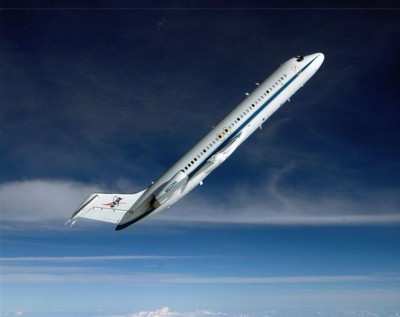Undergraduate Students Fly High For Weightless Experiments
 NASA has selected 28 undergraduate student teams to test their
science experiments in simulated weightlessness. The teams were
selected to fly in the summer of 2010 with NASA's Reduced Gravity
Student Flight Opportunities and Systems Engineering Educational
Discovery (SEED) programs.
NASA has selected 28 undergraduate student teams to test their
science experiments in simulated weightlessness. The teams were
selected to fly in the summer of 2010 with NASA's Reduced Gravity
Student Flight Opportunities and Systems Engineering Educational
Discovery (SEED) programs.
Selected teams will test and evaluate their experiments aboard
an aircraft modified to simulate a reduced-gravity environment. The
aircraft will fly approximately 30 roller-coaster-like climbs and
dips during experiment flights to produce periods of weightlessness
and hyper-gravity ranging from 0 g to 2 g.
"Today's students will be the ones going to the moon and beyond
to live, explore and work," said Douglas Goforth, the Reduced
Gravity Education Flight Program manager at NASA's Johnson Space
Center in Houston. "This project gives them a head start in
preparing for those future ventures by allowing them to conduct
hands-on research and engineering today in a unique reduced-gravity
laboratory."
The Reduced Gravity Student Flight Opportunities Program
provides a rare academic experience for undergraduate students to
propose, design, fabricate, fly and evaluate a reduced-gravity
experiment. The overall experience includes scientific research,
hands-on experimental design, test operations and outreach
activities.
Teams selected to participate in the Reduced Gravity Student
Flight Opportunities Program are from Utah State University, San
Jacinto College North, the College of New Jersey, State University
of New York at Buffalo, West Virginia University, Purdue
University, Yale University, Austin Community College, the
University of Washington, the University of Wisconsin at Madison,
two teams from Embry-Riddle Aeronautical University, and two teams
from the University of Michigan. Teams also may invite a full-time,
accredited journalist to fly with them and document the team's
experiment and experiences.
Teams selected to participate in the SEED program will work with
NASA scientists, engineers and researchers on systems engineering
projects that use a reduced gravity environment to test spaceflight
hardware, spacecraft components and spaceflight procedures. Each
team is assigned a NASA principal investigator to help prepare
their experiment for flight. The SEED teams also will participate
in at least two videoconferences through NASA's Digital Learning
Network to work with other engineering and agency
organizations.

The SEED teams for 2010 are from Washington University,
Massachusetts Institute of Technology, the University of Wisconsin,
Auburn University, the Ohio State University, the University of
Nebraska, the University of Toledo, Carthage College, Yale
University, the University of Kentucky, the University of Colorado,
and Boise State University, from which two teams were selected.
Under these programs, NASA continues its investment in the
nation's education programs. It is directly tied the agency's
education goal of strengthening NASA and the nation's future
workforce. Through this and other college and university programs,
NASA will identify and develop the critical skills and capabilities
needed to carry out its space exploration mission.
The flights are provided in cooperation with the Reduced Gravity
Office at NASA's Johnson Space Center. For more information about
the Reduced Gravity Education Flight Program or to view abstracts
of the selected team's experiments visit:
 Aero-News: Quote of the Day (12.07.25)
Aero-News: Quote of the Day (12.07.25) ANN's Daily Aero-Linx (12.07.25)
ANN's Daily Aero-Linx (12.07.25) NTSB Final Report: Lafferty Jack Sea Rey
NTSB Final Report: Lafferty Jack Sea Rey Classic Aero-TV: The B29 SuperFortress Doc - History in Flight
Classic Aero-TV: The B29 SuperFortress Doc - History in Flight Airborne 12.08.25: Samaritans Purse Hijack, FAA Med Relief, China Rocket Fail
Airborne 12.08.25: Samaritans Purse Hijack, FAA Med Relief, China Rocket Fail




